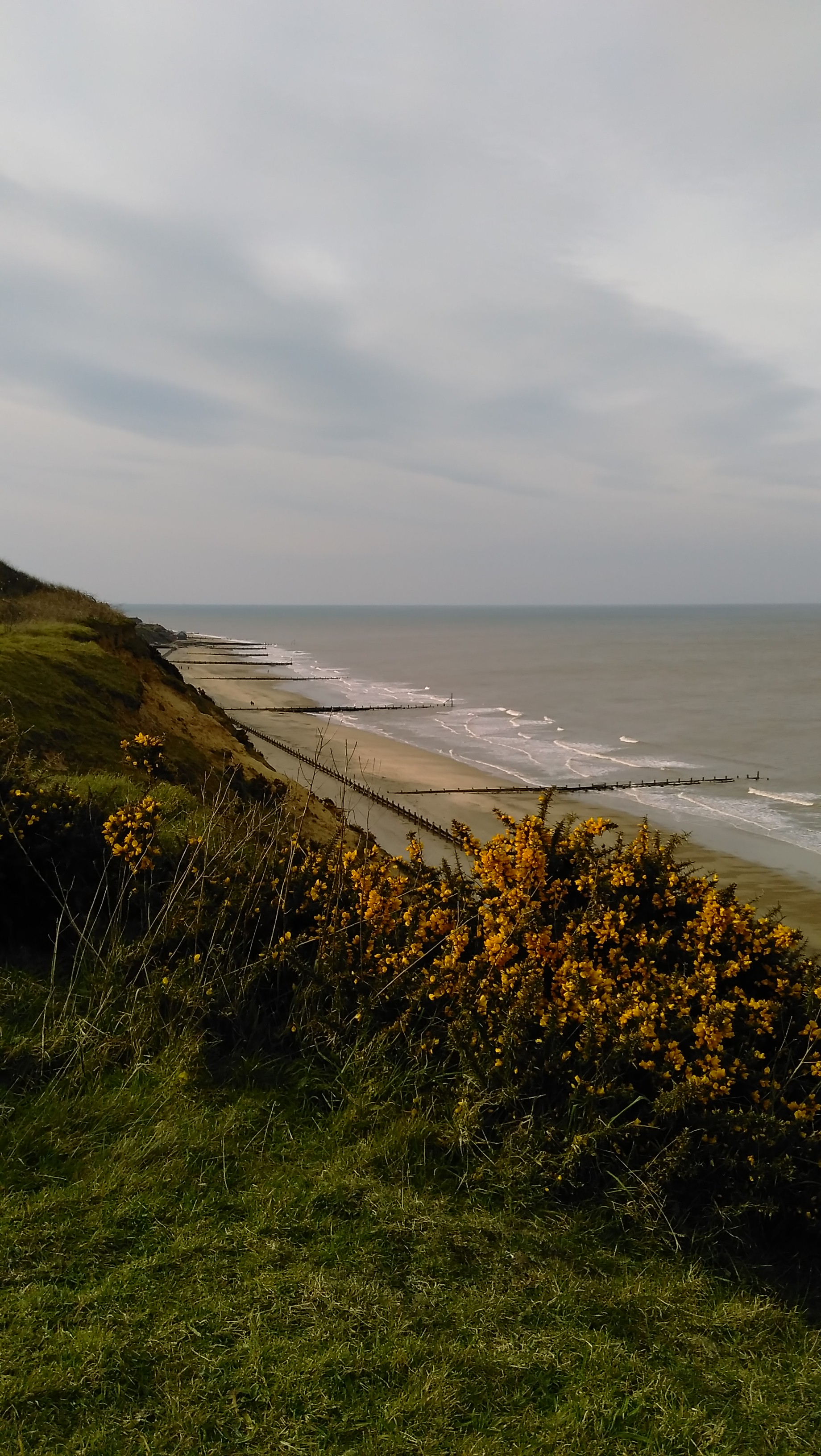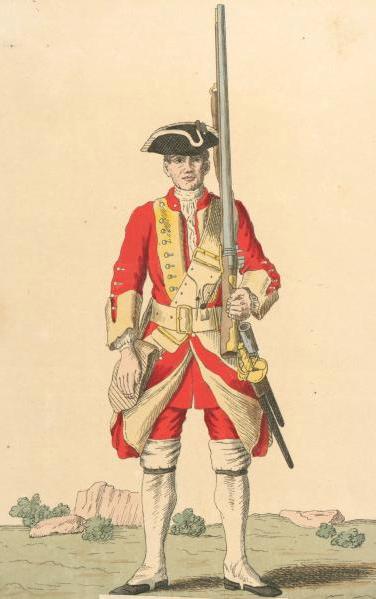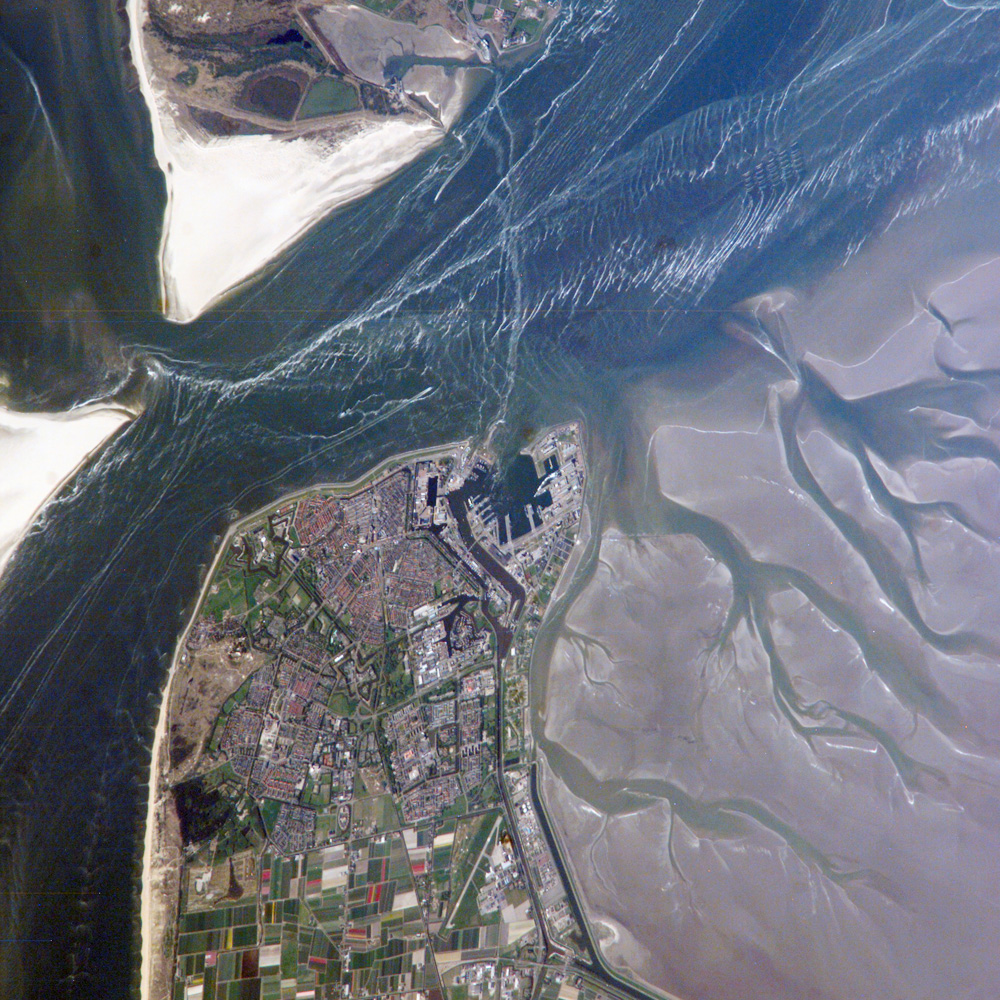|
Bacton, Norfolk
Bacton is a village and civil parish in Norfolk, England. It is on the Norfolk coast, some south-east of Cromer, north-west of Great Yarmouth and north of Norwich. Besides the village of Bacton, the parish includes the nearby settlements of Bacton Green, Broomholm, Keswick and Pollard Street. It also includes Edingthorpe, which was added to Bacton civil parish under the County of Norfolk Review Order, 1935. The seaside village, whose name is derived from 'Bacca's farm/settlement', is located on the North Norfolk coast between Mundesley (a blue flag beach) and Walcott, Norfolk. Bacton is known for its very quiet sandy beaches offering miles of walking along the beach and cliffs. The England Coast Path passes through the village and also the Paston Way long-distance footpath linking Cromer and North Walsham. In the east of the parish can be found the ruined Cluniac Bromholm Priory. The civil parish has an area of and in the 2001 census had a population of 1,130 in 474 house ... [...More Info...] [...Related Items...] OR: [Wikipedia] [Google] [Baidu] |
North Norfolk
North Norfolk is a local government district in Norfolk, England. Its council is based in Cromer. The population at the 2011 Census was 101,149. History The district was formed on 1 April 1974, under the Local Government Act 1972. It was a merger of Cromer Urban District, North Walsham Urban District, Sheringham Urban District, Wells-next-the-Sea Urban District, Erpingham Rural District, Smallburgh Rural District, and Walsingham Rural District. The district was originally to be called Pastonacres, but changed its name by resolution of the council and permission of the Secretary of State for Environment before it formally came into existence on 1 April 1974. Politics Elections to the district council are held every four years, with all of the seats on the council up for election every fourth year. The council was run by a Conservative administration, the Conservative party having gained a majority of 8 seats at the 2011 elections, which they increased to 18 at the 20 ... [...More Info...] [...Related Items...] OR: [Wikipedia] [Google] [Baidu] |
Non-metropolitan District
Non-metropolitan districts, or colloquially "shire districts", are a type of local government district in England. As created, they are sub-divisions of non-metropolitan counties (colloquially ''shire counties'') in a two-tier arrangement. Non-metropolitan districts with borough status are known as boroughs, able to appoint a mayor and refer to itself as a borough council. Non-metropolitan districts Non-metropolitan districts are subdivisions of English non-metropolitan counties which have a two-tier structure of local government. Most non-metropolitan counties have a county council and several districts, each with a borough or district council. In these cases local government functions are divided between county and district councils, to the level where they can be practised most efficiently: *Borough/district councils are responsible for local planning and building control, local roads, council housing, environmental health, markets and fairs, refuse collection and recyclin ... [...More Info...] [...Related Items...] OR: [Wikipedia] [Google] [Baidu] |
Royal Army Service Corps
The Royal Army Service Corps (RASC) was a corps of the British Army responsible for land, coastal and lake transport, air despatch, barracks administration, the Army Fire Service, staffing headquarters' units, supply of food, water, fuel and domestic materials such as clothing, furniture and stationery and the supply of technical and military equipment. In 1965 its functions were divided between other Corps ( RCT and RAOC) and the RASC ceased to exist; subsequently, in 1993, they in their turn (with some functions of the Royal Engineers) became the "Forming Corps" of the Royal Logistic Corps. History For centuries, army transport was operated by contracted civilians. The first uniformed transport corps in the British Army was the Royal Waggoners formed in 1794. It was not a success and was disbanded the following year. In 1799, the Royal Waggon Corps was formed; by August 1802, it had been renamed the Royal Waggon Train. This was reduced to only two troops in 1818 and finally ... [...More Info...] [...Related Items...] OR: [Wikipedia] [Google] [Baidu] |
Royal Garrison Artillery
The Royal Garrison Artillery (RGA) was formed in 1899 as a distinct arm of the British Army's Royal Regiment of Artillery serving alongside the other two arms of the Regiment, the Royal Field Artillery (RFA) and the Royal Horse Artillery (RHA). The RGA were the 'technical' branch of the Royal Artillery who were responsible for much of the professionalisation of technical gunnery that was to occur during the First World War. It was originally established to man the guns of the British Empire's forts and fortresses, including coastal artillery batteries, the heavy gun batteries attached to each infantry division and the guns of the siege artillery. The RGA was amalgamated with the RFA in 1924, from which time the only two arms within the Royal Regiment of Artillery have been the Royal Artillery and the Royal Horse Artillery. Organisation The Royal Garrison Artillery came into existence as a separate entity when existing coastal defence, mountain, siege and heavy batteries of t ... [...More Info...] [...Related Items...] OR: [Wikipedia] [Google] [Baidu] |
Royal Norfolk Regiment
The Royal Norfolk Regiment was a line infantry regiment of the British Army until 1959. Its predecessor regiment was raised in 1685 as Henry Cornwall's Regiment of Foot. In 1751, it was numbered like most other British Army regiments and named the 9th Regiment of Foot. It was formed as the Norfolk Regiment in 1881 under the Childers Reforms of the British Army as the county regiment of Norfolk by merging the 9th (East Norfolk) Regiment of Foot with the local Militia and Rifle Volunteers battalions. The Norfolk Regiment fought in the First World War on the Western Front and in the Middle Eastern theatre of World War I, Middle East. After the war, the regiment became the Royal Norfolk Regiment on 3 June 1935. The regiment fought with distinction in the Second World War, in action in the Battle of France and Battle of Belgium, Belgium, the Burma campaign, Far East, and then in the invasion of, and subsequent operations in, Western Front (World War II), North-west Europe. In 195 ... [...More Info...] [...Related Items...] OR: [Wikipedia] [Google] [Baidu] |
East Yorkshire Regiment
The East Yorkshire Regiment was a line infantry regiment of the British Army, first raised in 1685 as Sir William Clifton's Regiment of Foot and later renamed the 15th Regiment of Foot. It saw service for three centuries, before eventually being amalgamated with the West Yorkshire Regiment (Prince of Wales's Own) in 1958, to form the Prince of Wales's Own Regiment of Yorkshire. Subsequently, the regiment amalgamated with the Green Howards and the Duke of Wellington's Regiment (West Riding) to form the Yorkshire Regiment (14th/15th, 19th and 33rd/76th Foot) on 6 June 2006. History Early wars Raised in 1685 in Nottingham by Sir William Clifton, 3rd Baronet, the regiment was originally, like many British infantry regiments, known by the name of its current Colonel. It took part in the Battle of Killiecrankie in July 1689Cannon, p. 6 and the Battle of Cromdale in April 1690 during the Jacobite rising of 1689 to 1692. The regiment embarked for Flanders in spring 1694 for service ... [...More Info...] [...Related Items...] OR: [Wikipedia] [Google] [Baidu] |
Royal Naval Division
The 63rd (Royal Naval) Division was a United Kingdom infantry division of the First World War. It was originally formed as the Royal Naval Division at the outbreak of the war, from Royal Navy and Royal Marine reservists and volunteers, who were not needed for service at sea. For RN personnel, the designation HMS ''Victory IV'' was used. The division fought at Antwerp in 1914 and at Gallipoli in 1915. In 1916, following many losses among the original naval volunteers, the division was transferred to the British Army as the 63rd (Royal Naval) Division, re-using the number from the disbanded second-line 63rd (2nd Northumbrian) Division Territorial Force. As an Army formation, it fought on the Western Front for the remainder of the war. Origins Advanced Base Force When the war began, a Marine Brigade of four infantry battalions was formed from men of the Royal Marine Light Infantry and Royal Marine Artillery. The brigade was to be an Advanced Base Force, according to a pre-war ... [...More Info...] [...Related Items...] OR: [Wikipedia] [Google] [Baidu] |
Suffolk Regiment
The Suffolk Regiment was an infantry regiment of the line in the British Army with a history dating back to 1685. It saw service for three centuries, participating in many wars and conflicts, including the First and Second World Wars, before being amalgamated with the Royal Norfolk Regiment to form the 1st East Anglian Regiment (Royal Norfolk and Suffolk) in 1959 which, in 1964, was further amalgamated with the 2nd East Anglian Regiment (Duchess of Gloucester's Own Royal Lincolnshire and Northamptonshire), the 3rd East Anglian Regiment (16th/44th Foot) and the Royal Leicestershire Regiment to create the present Royal Anglian Regiment. History Early history In 1685, the Duke of Norfolk's Regiment of Foot was recruited in Norfolk and Suffolk by the Duke of Norfolk. Raised to suppress the Monmouth Rebellion, it became part of the Royal Army and its Colonel Lord Lichfield remained loyal to James II after the 1688 Glorious Revolution. He was replaced by Henry Wharton and the ... [...More Info...] [...Related Items...] OR: [Wikipedia] [Google] [Baidu] |
Den Helder
Den Helder () is a municipality and a city in the Netherlands, in the province of North Holland. Den Helder occupies the northernmost point of the North Holland peninsula. It is home to the country's main naval base. From here the Royal TESO ferryboat service operates the transportation link between Den Helder and the nearby Dutch Wadden island of Texel to the north. Etymology Before the year 1928 the official name of Den Helder was Helder. The origin of the name Helder is not entirely clear. The name Helder may have come from ''Helle/Helde'', which means "hill" or "hilly grounds", or from ''Helre'', which means a sandy ridge. Another explanation is that the name derived from ''Helsdeur'' (Hell's Door), likely because in the water between Den Helder and Texel (called Marsdiep) the current was so strong that many ships were lost. History Huisduinen was the original older part of the city, whereas Helder itself was a nearby smaller hamlet. When a harbour was built near Hel ... [...More Info...] [...Related Items...] OR: [Wikipedia] [Google] [Baidu] |
Bacton Gas Terminal
The Bacton Gas Terminal is a complex of six gas terminals within four sites located on the North Sea coast of North Norfolk in the United Kingdom. The sites are near Paston and between Bacton and Mundesley; the nearest town is North Walsham. The other main UK gas terminals which receive gas from the UK continental shelf are at St Fergus, Aberdeenshire; Easington, East Riding of Yorkshire; Theddlethorpe, Lincolnshire; CATS Terminal, Teesside; and Rampside gas terminal, Barrow, Cumbria. History The Bacton complex which covers an area of about 180 acres (73 ha) opened during 1968. It has a frontage of 1 km (3200 feet) along the cliff top. It was initially built by Shell-Esso, Phillips Petroleum-Arpet Group, Amoco-Gas Council. Planning permission had been given on 16 June 1967 by Anthony Greenwood, Baron Greenwood of Rossendale. The Leman field began production on 13 August 1968 (joint Shell-Esso and joint Amoco-Gas Council), the Hewett field (Phillips Petroleum-Arpet Group) ... [...More Info...] [...Related Items...] OR: [Wikipedia] [Google] [Baidu] |
Coastal Erosion
Coastal erosion is the loss or displacement of land, or the long-term removal of sediment and rocks along the coastline due to the action of waves, currents, tides, wind-driven water, waterborne ice, or other impacts of storms. The landward retreat of the shoreline can be measured and described over a temporal scale of tides, seasons, and other short-term cyclic processes. Coastal erosion may be caused by hydraulic action, abrasion, impact and corrosion by wind and water, and other forces, natural or unnatural. On non-rocky coasts, coastal erosion results in rock formations in areas where the coastline contains rock layers or fracture zones with varying resistance to erosion. Softer areas become eroded much faster than harder ones, which typically result in landforms such as tunnels, bridges, columns, and pillars. Over time the coast generally evens out. The softer areas fill up with sediment eroded from hard areas, and rock formations are eroded away. Also erosion commonly ... [...More Info...] [...Related Items...] OR: [Wikipedia] [Google] [Baidu] |



%2C_St._David's%2C_Bermuda_in_2011.jpg)




